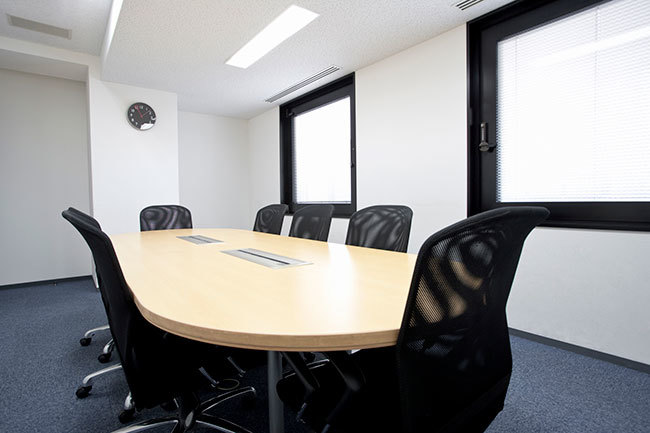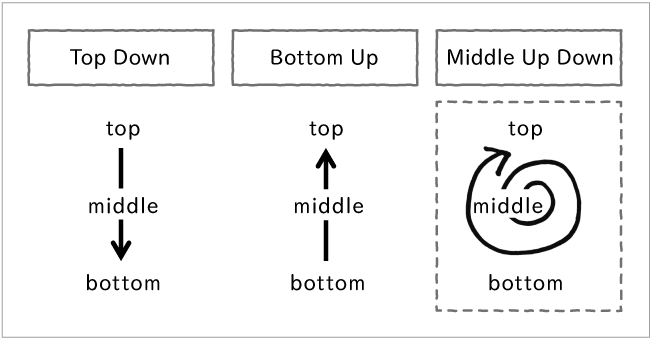Incidentally, today's theme isn't about physical positioning.
Perhaps it started with Hiroshi Sasaki's copy in the ADC Yearbook 2010: "Place the art director next to the president." There seems to be a prevailing sentiment, especially in the advertising industry, that creators should sit beside the president to leverage their sense and judgment!
Personally, I'm challenging myself to adapt the unique idea-generation methodologies of ad agencies to other fields, so I deeply resonate with this perspective. Yet, when I reflect on the actual projects I'm working on, I can't help but wonder if "next to the president" is truly the right place to be.
This relates to the question: "Where does innovation actually happen?"
From the perspective of "knowledge creation" in management studies, innovation occurs neither at the top nor the bottom of an organization, but in the "middle." This is because it's a process where middle managers take the lead, repeatedly engaging in dialogue and practice, shuttling back and forth between the ideals (vision) set by top management and the realities faced on the ground (bottom), resolving contradictions.
Concepts and ideas that transform a business are only obtained through this "middle-up-down" approach, not through linear "top-down" or "bottom-up" methods.
In reality, when developing new businesses at any company, while extensive discussions are held with executives as decision-makers, far more time is spent working alongside the middle managers responsible for the front lines.
While I, as an outsider, might offer fresh perspectives, refining these into solid concepts and developing unprecedented concrete strategies requires leveraging all the knowledge and skills inherent in the organization's front lines.
That's precisely why, when presenting the resulting "new business plan," I usually sit next to the middle manager, not beside the president.
Honestly, it would be so much easier if I could just sit next to the president, riding on his coattails, and critique various projects here and there. But the president always ends up on the other side of the table. Since I don't want to confront him head-on (laughs), I usually end up sitting diagonally in front of him.
I'm still not entirely sure what approach is most efficient and effective, but for now, I believe this method is best. I'm probably making a big fuss in front of some executive somewhere.
Well, well.
Thanks to you all, this series has reached its 150th installment. I sincerely thank every reader who joins me every other Thursday for these food-related musings.
Tonight, let's clink glasses and toast to "celebrating" this milestone. Come to think of it, I mentioned this back at the 100th installment too: if any executives out there are struggling with innovation, please feel free to reach out! Food-related or otherwise, of course.








